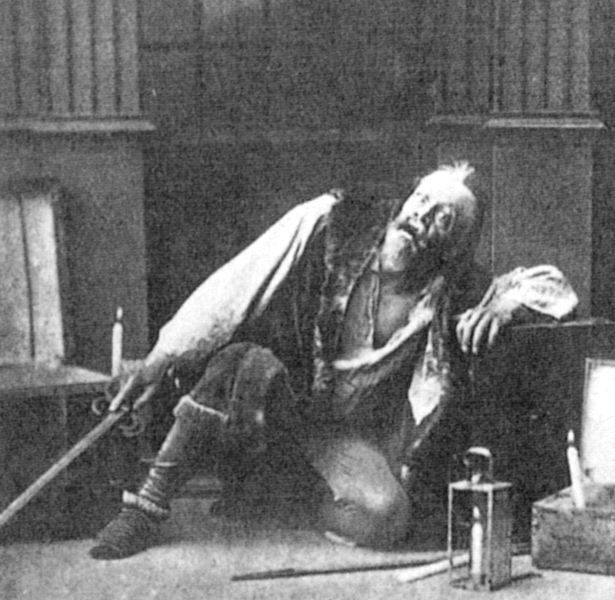 |
| Sad Knight is sad. |
Back in college I participated in a study abroad program with the Oxford School of Drama*. One of the acting professors for the program was a grumpy Transylvanian man named Robert Fried (pronounced fhreed with a slight roll to the 'r'). One of Mr. Fried's favorite utterances, other than various epithets about "penetrating your mother" was, "Vhat is your preparation?" See, Mr. Fried was an adherant of the
Stanislavski system of acting, which involves channeling one's own past experiences (read: emotional baggage) into a scene in order to trigger a more "realistic" performance. Now, while this technique represents many of the things I loathe about acTOR culture (narcissism, name dropping/mentor worship, over-psychoanalyzing), learning to develop "triggers" that can inform character choices and drive scenes is a very useful skill for actors, authors and GMs alike.
Early this week, I sat down with a fellow GM for a nerdstorming session to help me plan for my Thursday night game. As we were throwing around ideas for an upcoming encounter, my friend asked, "What is the ideal outcome for this character in this situation?" A light bulb went on, the floodgates opened and mental block walls came crashing down. That one simple sentence "What is the ideal outcome?" was the trigger for which I had been searching.
When I thought about it, it made a tremendous amount of sense. Whenever I find myself faced with a problem, challenge and or conflict, I always have a desired result in mind:
- My mom will let me have ice cream for dinner
- The prisoner will come along quietly
- I'll kill the boar with the first thrust of my spear and the village will have snacks!
If something threatens to derail that ideal, I will drive over around or through the obstacle to try and reach it.
A character's ideal outcome helps inform the tactics he or she will use when faced with a conflict. A lawman who wants to bring a prisoner to justice will likely use different tactics from a bounty hunter whose ideal outcome is getting the reward. Of course, the actual outcome rarely follows the envisioned ideal. The ideal runs face first into obstacles like the environment, lack of resources, and/or the differing ideals of others. Those differences are what generate the conflict and excitement in a scene.
After the nerdstorming discussion, I decided to add a summary of each NPC's ideal outcome into the notes for each encounter I was planning. While preparing for the game, I found this helped me plan for more inherently exciting encounters and to create excitement out of things other than "OGRES! you all draw weapons!" During the actual game, as I played the parts of these NPCs, I kept that ideal firmly in my mind and directed their actions accordingly. Using the ideal as a guidepost helped me feel more comfortable with less preparation and, I felt resulted in some NPC encounters with more nuance and life to them.
Now, "what is the ideal outcome?" might not work as a trigger for everyone. Some people may prefer building their character interactions around props, physical mannerisms, voices or even catch phrases. I have tried all of these with varying degrees of success. Whatever your trigger, I find that having a clear, simple guide point on which you can hang your character helps tremendously in preparing more exciting scenes and then putting them into play.
* It sounds
way more prestigious than it actually is as the school is not directly affiliated with any of the Oxford colleges, but
is located in Oxfordshire.


 Here's what I used:
Here's what I used: